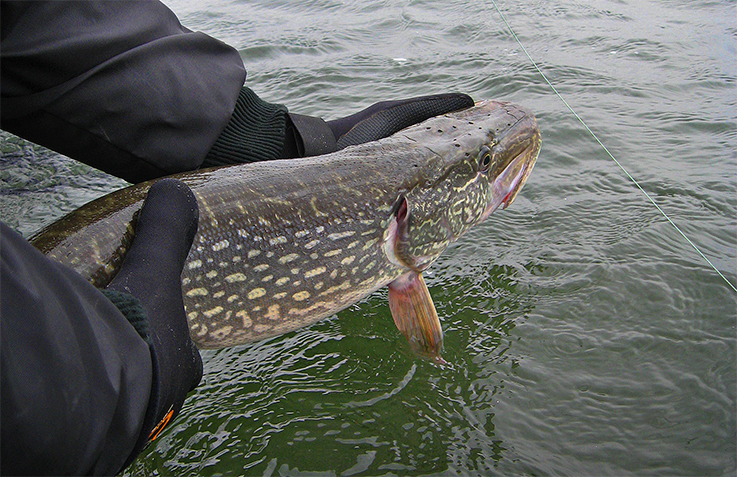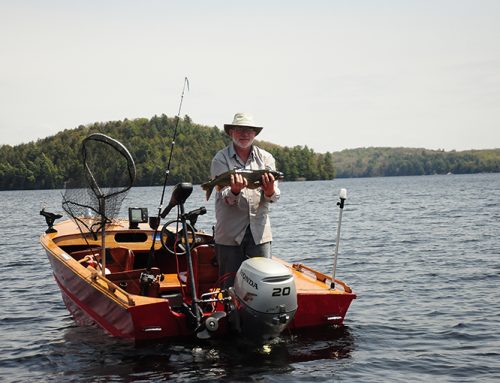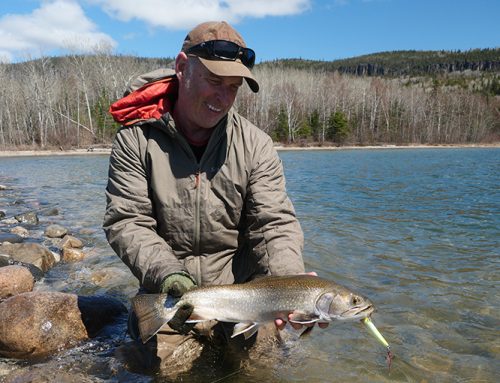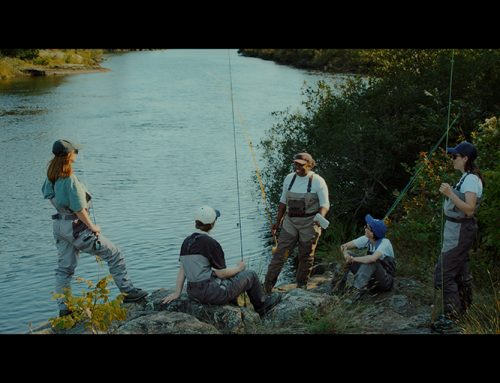
It may seem odd that we fling lures loaded with hooks to capture muskie and pike, only to take measures for their safe release. But, returning these fierce fish to the water in good shape is important. A little know-how and planning can make all the difference to a positive outcome for the muskie, pike, and you.
Release basics
How you release a fish largely depends on the water, the size of the fish, the way the hooks are positioned inside the fish’s mouth, and the equipment at hand.
As a general rule, cold or cool water is good for successful releases. Warm water generally works against you. If it’s soupy warm, you can do everything right and still have a fish die on you, so consider suspending fishing during these spells. A surface temperature approaching 80˚F can be a good indicator to take a break or focus on cooler mornings and evenings.
That said, deep, cool northern lakes can be warm at the surface and cooler just a foot or so down. Shallow southern lakes might maintain their temperatures in the top several feet, which is hard on fish.
Small fish can and should be released without a net. A single hook often requires only a simple grasp with longnosed pliers and a flick of the wrist. If, however, the fish has taken multiple trebles, or if it’s a bigger specimen, netting the fish is the safest way to go.
It’s a good idea to reduce the hook’s barb by bending it down just a bit. My landing rates actually increased after doing this and the fish are much easier to release.
Essential tools
A muskie net or cradle is an essential item. It should have three characteristics. It should be of high quality so it doesn’t fail when needed, be constructed of netting that protects the fish’s slime coat and fins from entanglement and damage, and be bigger than you think you will ever need.
Long needle-nose pliers or hookouts, hook cutters and a tape measure are also must-haves. Many anglers like to wear protective gloves made of Kevlar or similar material, but I prefer cotton or thin leather gloves that I’ve soaked well before using. Spring spreaders are handy for fish that won’t keep their mouth open, but they can be hard on smaller fish or if used improperly. They can also fly out of the fish’s mouth directly at your face, so use with care. I use them only when necessary, and I bend them to adjust the tension.
The human factor
The greatest threat to a safe release is an angler with an adrenaline-rush who’s making poor decisions. Common offences include holding a fish improperly, keeping it out of the water too long, dropping a fish, and roughly ripping hooks out of the mouth. You can and should thoroughly enjoy the moment, but keep the fish’s welfare in mind.
Once the fish is in the net, make sure the boat is in a spot where you can safely work. If you’re drifting into rocks or a busy travel route, move so you can give your full attention to the release.
The release
Landing a trophy muskie or pike is a feat most anglers want to capture with a photo, but be sure to time it right. Once the fish is unhooked in the net, have one angler hold the fish, supporting as much of its body as possible, while the other takes some quick photos. Lower the fish back into the net and hold it upright by the tail.
When the fish is moving its fins and can remain upright independently, lower the edge of the net, let go of the tail and wait for it to swim away. The whole process should only take a few minutes, but larger or more deeply hooked fish may take longer. Stay with the fish until it’s safely released.
Avoiding damage
Avoid touching the fish’s eyes and gills, as damage to these areas can be a death sentence. Make sure that anything that touches the fish is wet. The fish’s slime protects them from infection and nothing removes slime faster than dry surfaces. That’s especially important for your hands and gloves. I’ve seen enough fish with fungus growth in the shape of a hand to know how important this precaution is.
Never hang the fish by its gill plate. Support as much of the fish’s weight as possible by holding them horizontally. Use a rod, reel, and line combination that allows you to quickly land the fish. Prolonged battles are especially hard on muskie and pike.
If a fish is having trouble recuperating, try holding it deeper in the water to take advantage of slightly cooler water. If the water is calm, get some water flowing over its gills by moving the boat with a paddle or trolling motor on low while the fish points in the same direction as the boat.
Ontario has world-class pike fishing and arguably the best muskie fishing on the planet. To keep it that way, we must release most of the fish we catch. And, we owe it to the fish to do it right.
The Muskies Canada website is a good source of information on releasing fish, as is the Ministry of Natural Resources site.






Leave A Comment